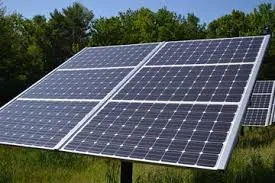solar panel system size
Understanding Solar Panel System Size
In the pursuit of sustainable energy solutions, solar power has emerged as one of the leading alternatives to fossil fuels. As more households and businesses consider the transition to solar energy, one of the crucial aspects to understand is the size of the solar panel system required to meet energy needs. Selecting the right system size is vital for maximizing efficiency, reducing energy costs, and ensuring a reliable power supply.
What Determines Solar Panel System Size?
The size of a solar panel system is primarily influenced by two key factors energy consumption and available space. To determine how many solar panels you need, you must first assess your energy consumption, which is typically measured in kilowatt-hours (kWh). Electric bills provide a clear picture of your monthly and annual energy usage, enabling homeowners and businesses to calculate their average daily consumption.
For example, if your household consumes about 900 kWh per month, this translates to approximately 30 kWh per day. With solar panels generating anywhere from 250 to 400 watts of power each, you can estimate the number of panels required for your specific energy needs. A solar panel that produces 300 watts of power at peak efficiency will generate about 1.5 kWh per day. Therefore, to meet a consumption of 30 kWh, you would typically need around 20 solar panels, assuming optimal conditions.
Assessing Available Space
In addition to energy consumption, the available space for installation plays a critical role in determining system size. Solar panels require sufficient roof space or ground area to be installed adequately. A standard residential solar panel measures around 65 inches by 39 inches, covering approximately 17.5 square feet. The total available area will dictate how many panels can be installed and, consequently, the potential energy output of the system.
It is essential to consider the orientation and tilt of your roof when assessing space. South-facing roofs generally receive the most sunlight throughout the day, maximizing energy production. Moreover, areas shaded by trees or other buildings may experience reduced solar panel efficiency, affecting the overall system size needed to meet energy demands.
Calculating System Size
Once energy consumption and available space have been evaluated, the calculation for solar panel system size becomes straightforward
. The formula is relatively simplesolar panel system size

1. Daily Energy Requirement (kWh) ÷ Average Solar Production per Panel (kWh) = Number of Panels Needed
For instance, if your household uses 30 kWh per day and each panel produces about 1.5 kWh per day, you will need around 20 panels
30 kWh/day ÷ 1.5 kWh/panel ≈ 20 panels.
This basic calculation is foundational, but additional considerations include peak sun hours; areas with more sunlight will require fewer panels to generate the same amount of electricity.
Efficiency and Technology
The efficiency of solar panels has come a long way, with modern panels achieving efficiency ratings of 15% to over 22%. Higher efficiency means more power output for the same amount of space. Therefore, those with limited roof space may opt for more efficient panels to maximize energy generation.
Moreover, advancements in solar technology, including bifacial panels and solar tiles, offer innovative solutions that can produce more energy in less space. Although these technologies might come at a premium price, the long-term savings on energy bills can offset initial investments.
Conclusion
Choosing the right solar panel system size is pivotal for optimizing energy savings and making the most of your investment in solar technology. By understanding your energy needs, available installation space, and the efficiencies of various panel options, you can tailor a solar energy system that meets your requirements. As the world increasingly shifts towards sustainable energy solutions, understanding the intricacies of solar panel system sizing is an essential step for anyone considering solar energy. Investing in the right size system not only contributes to a greener future but can also lead to significant cost savings in the long run.
-
Navigating Off Grid Solar Inverter: From Use Cases to Trusted PartnersNewsAug.05,2025
-
Solar Edge String Inverter: A Wholesaler’s Guide to Inverter Technology SelectionNewsAug.05,2025
-
Microinverters: Revolutionizing Solar Energy UseNewsAug.05,2025
-
Future of Monocrystalline Solar Panel Efficiency: Latest Technological AdvancesNewsAug.05,2025
-
Solar Panels for House: A Complete Guide to Residential Solar EnergyNewsAug.05,2025
-
Panel Bifacial Performance in Snow and Low-Light ConditionsNewsAug.05,2025







